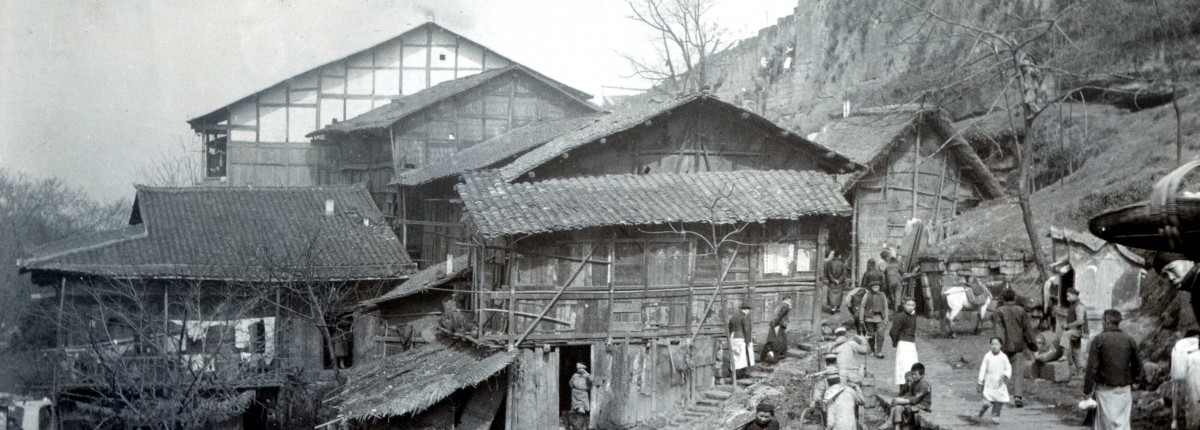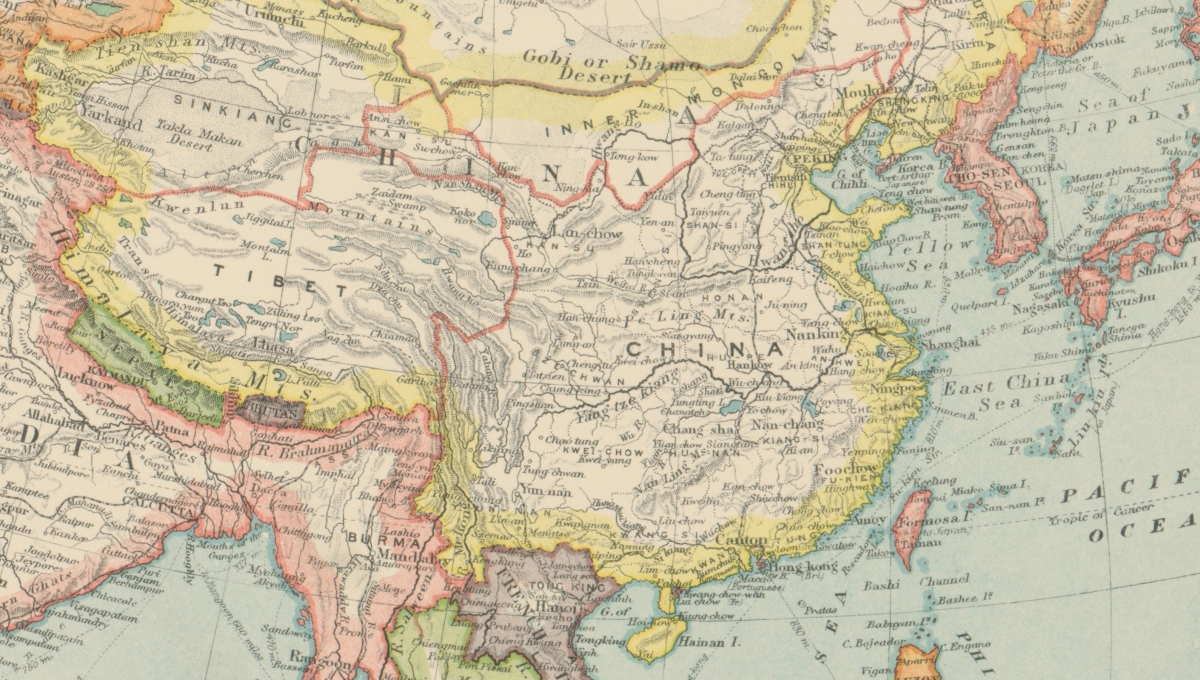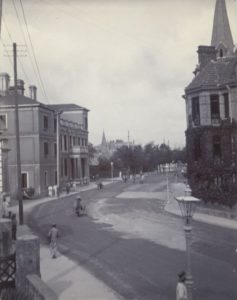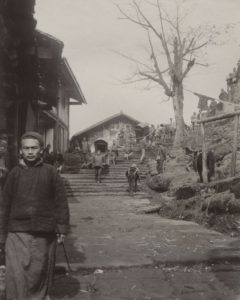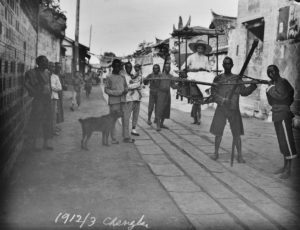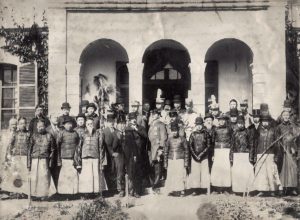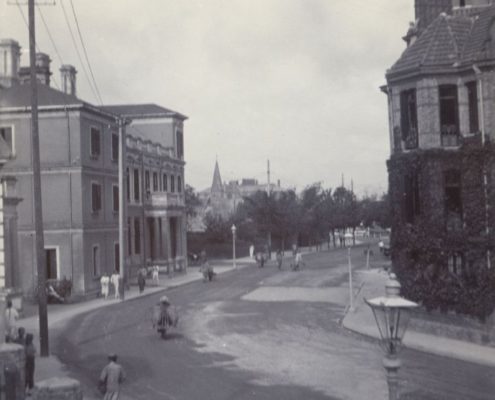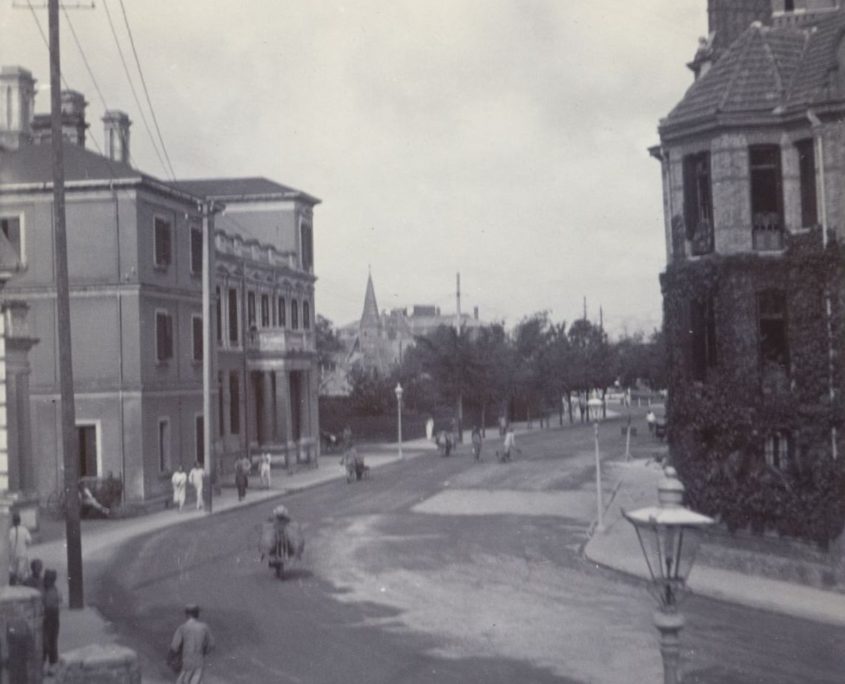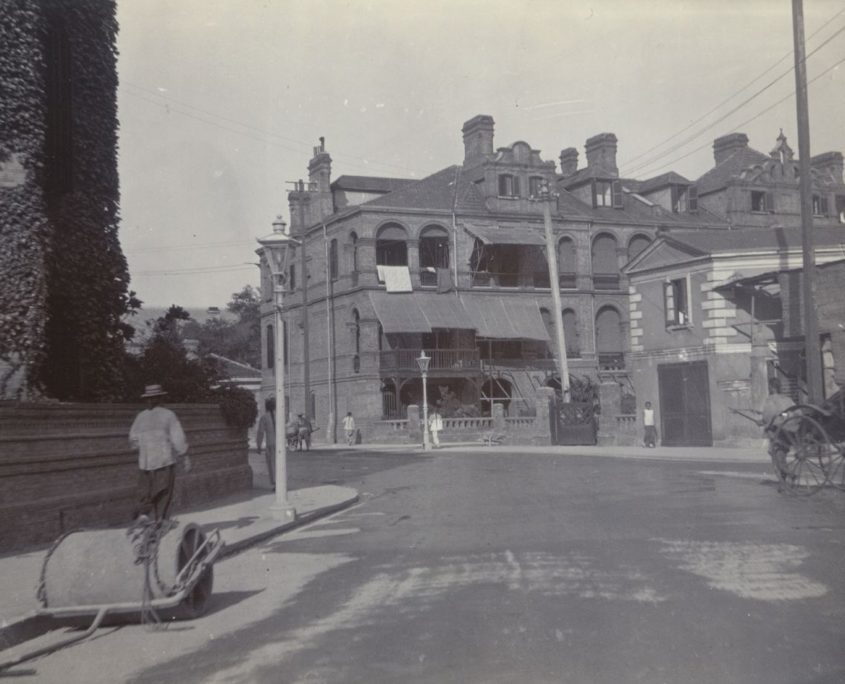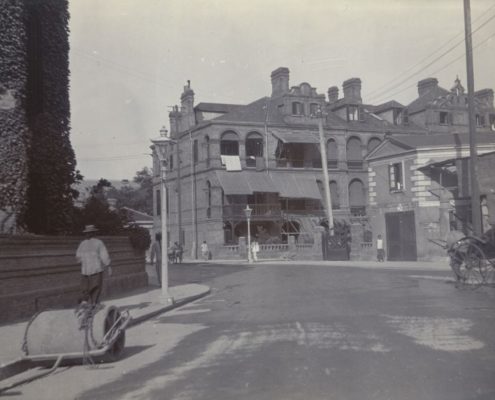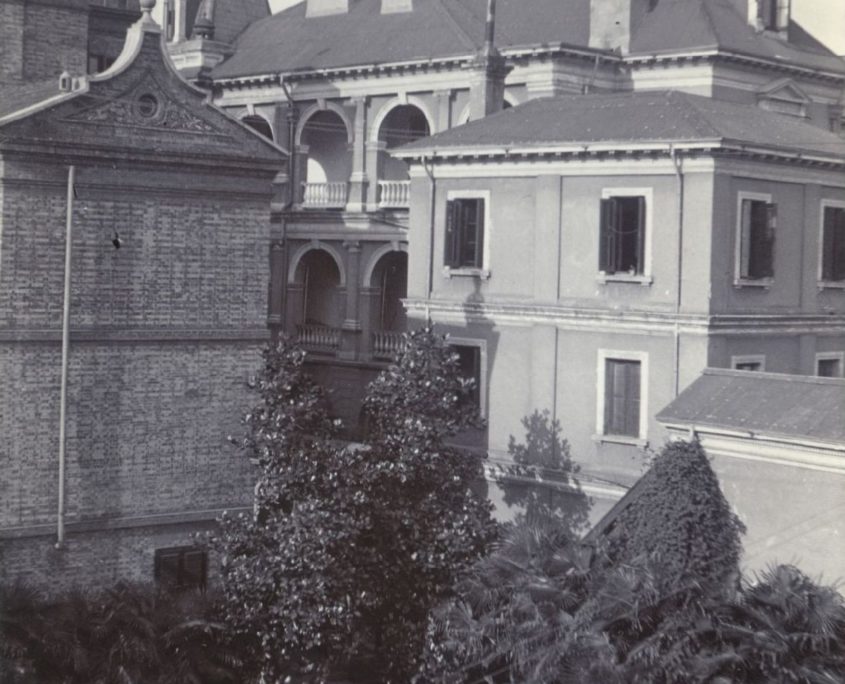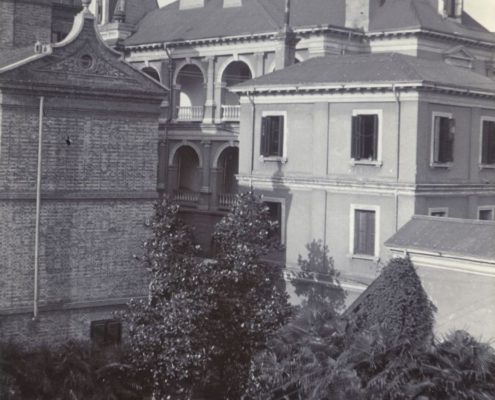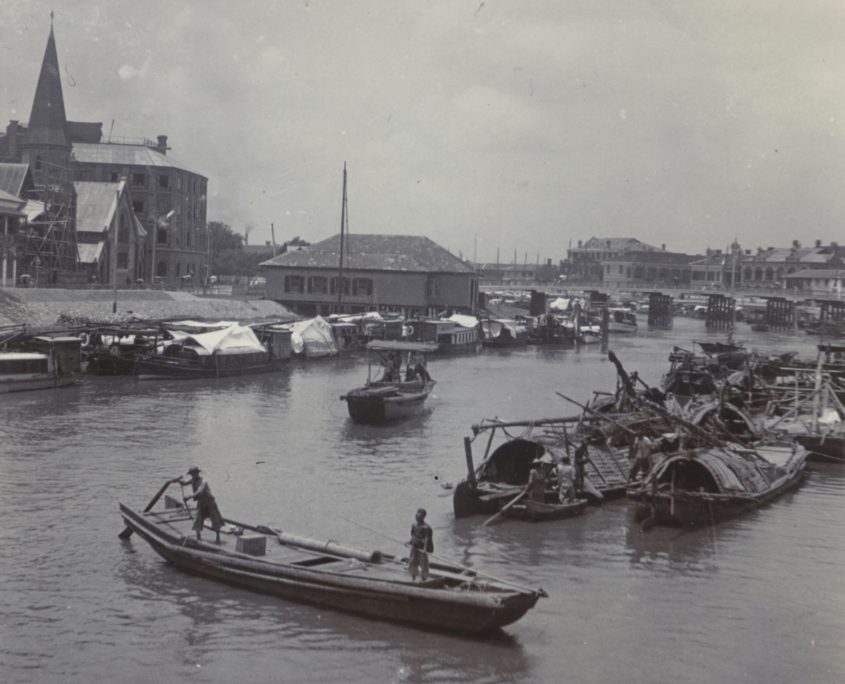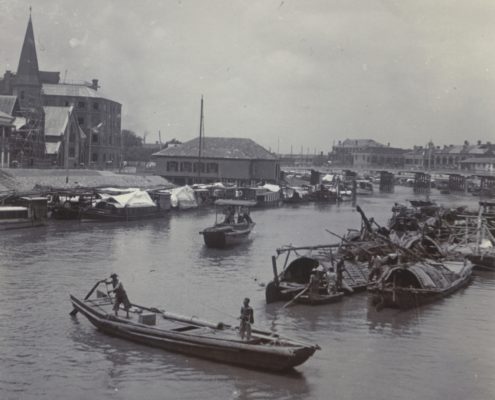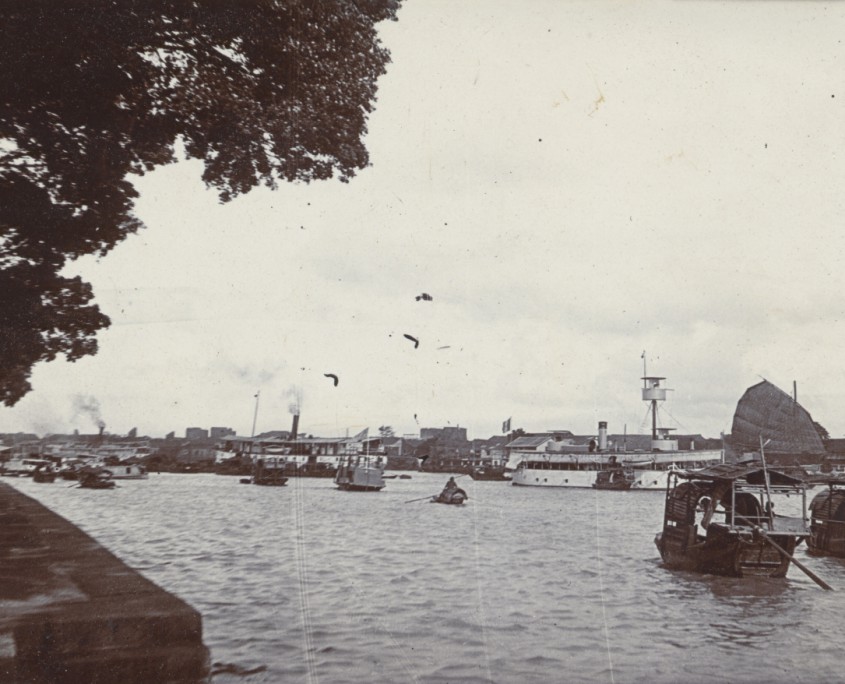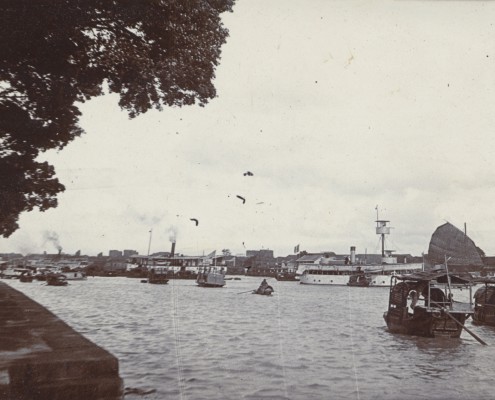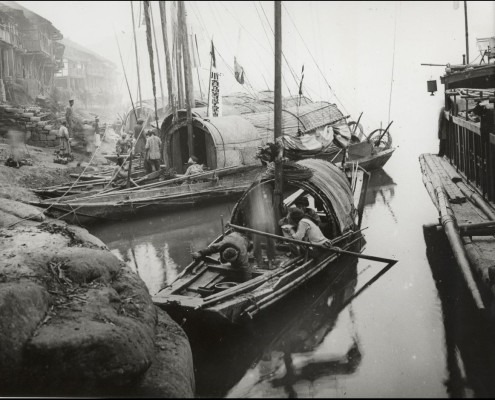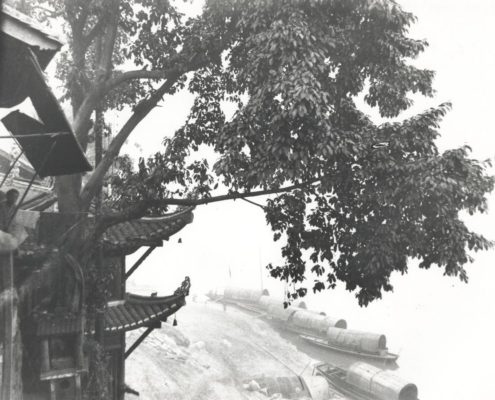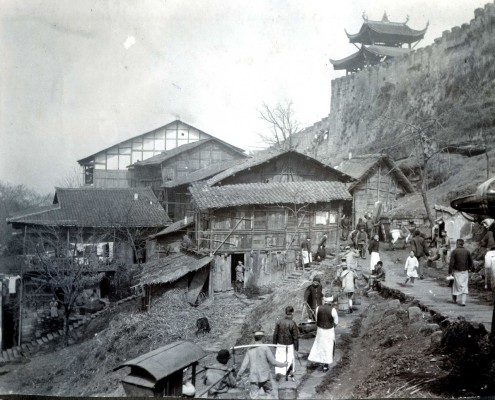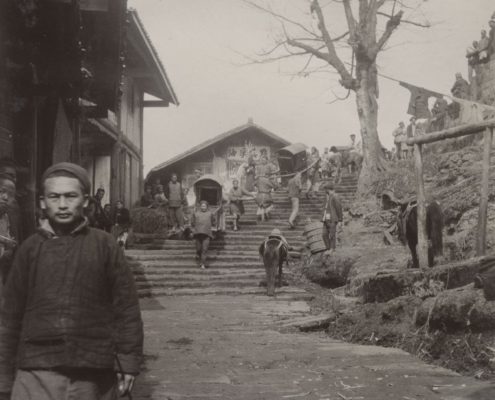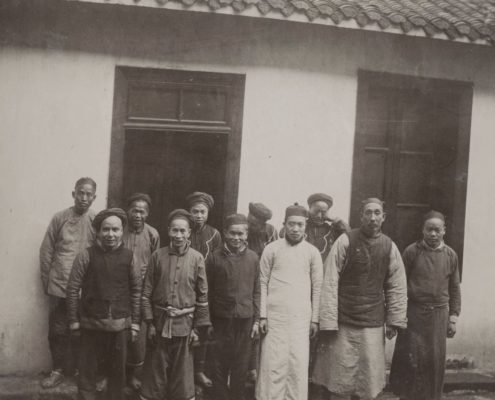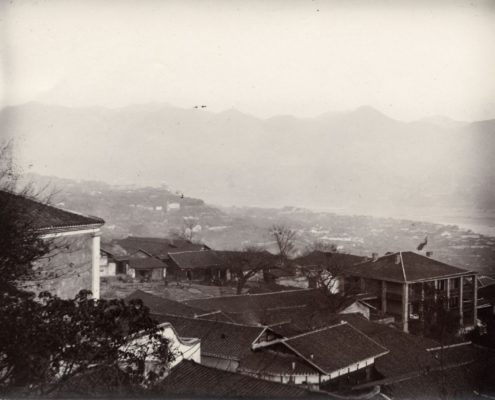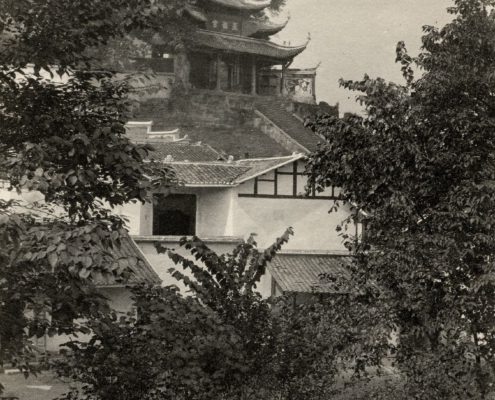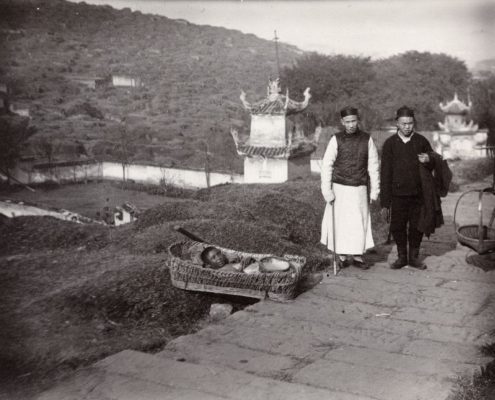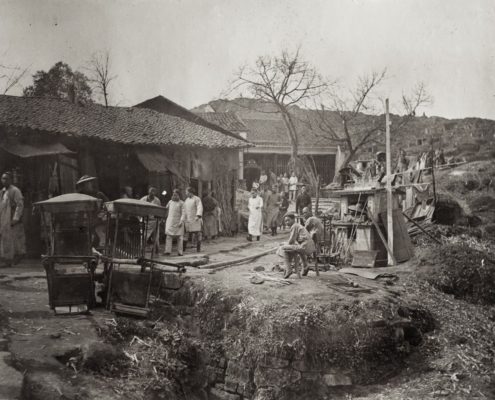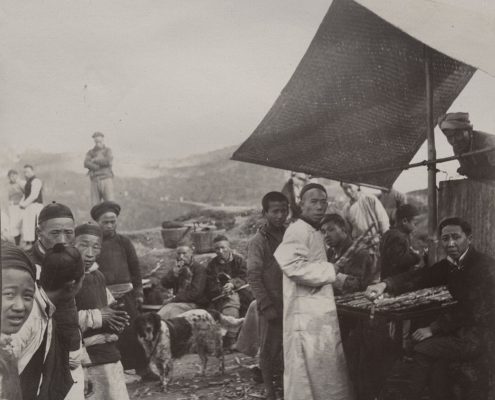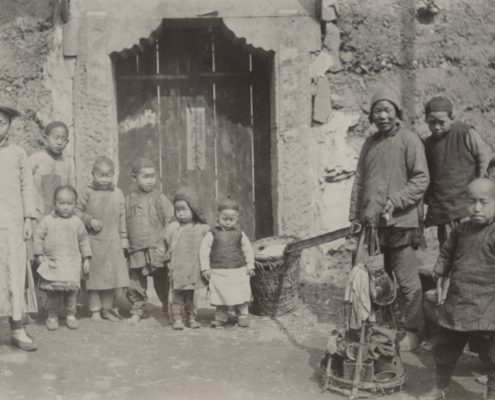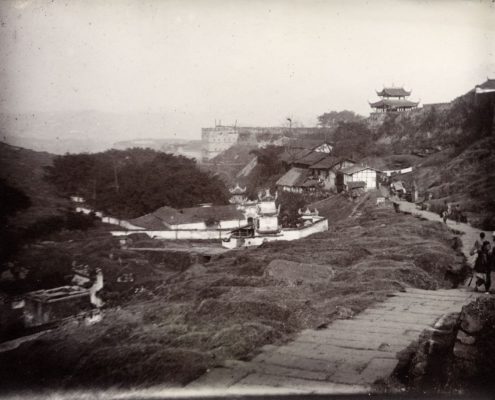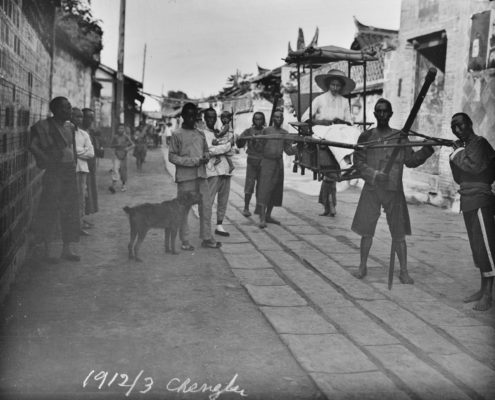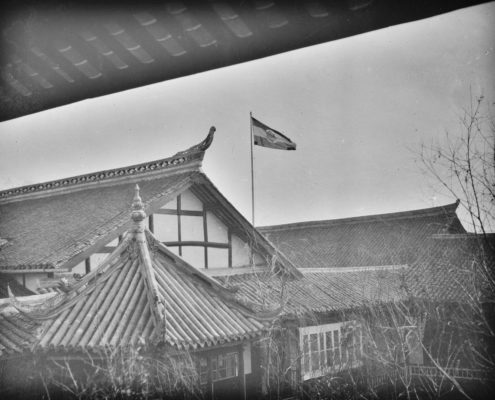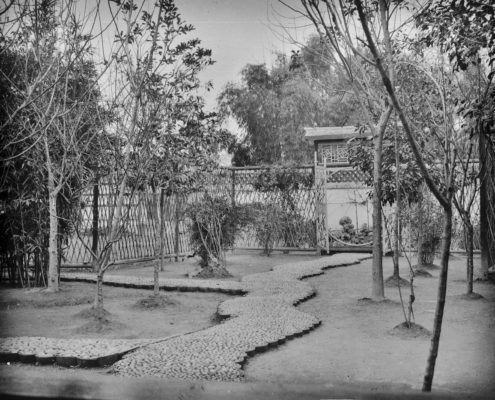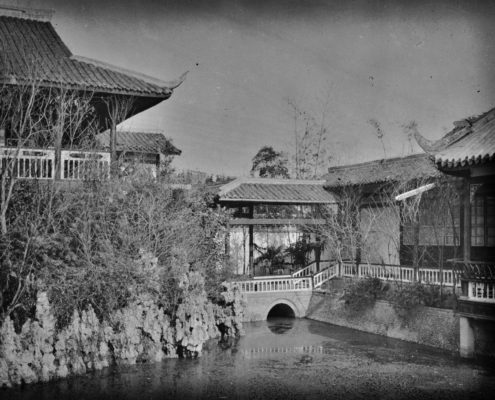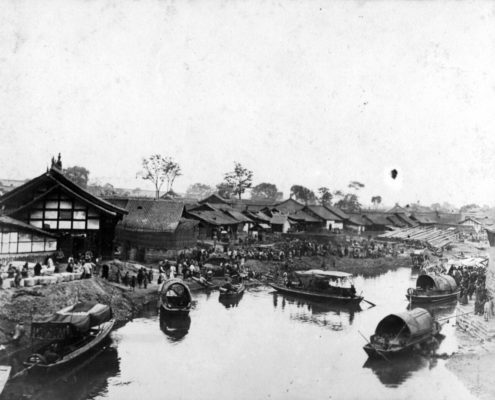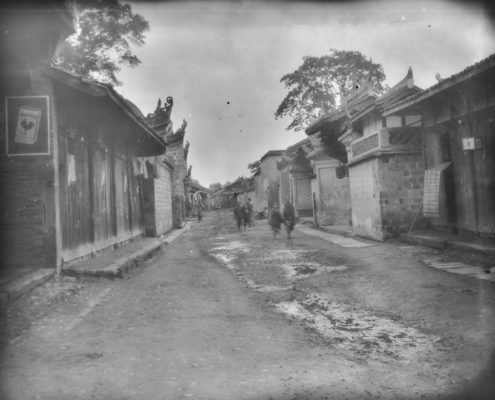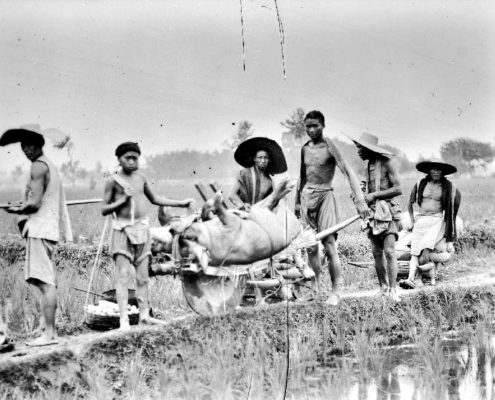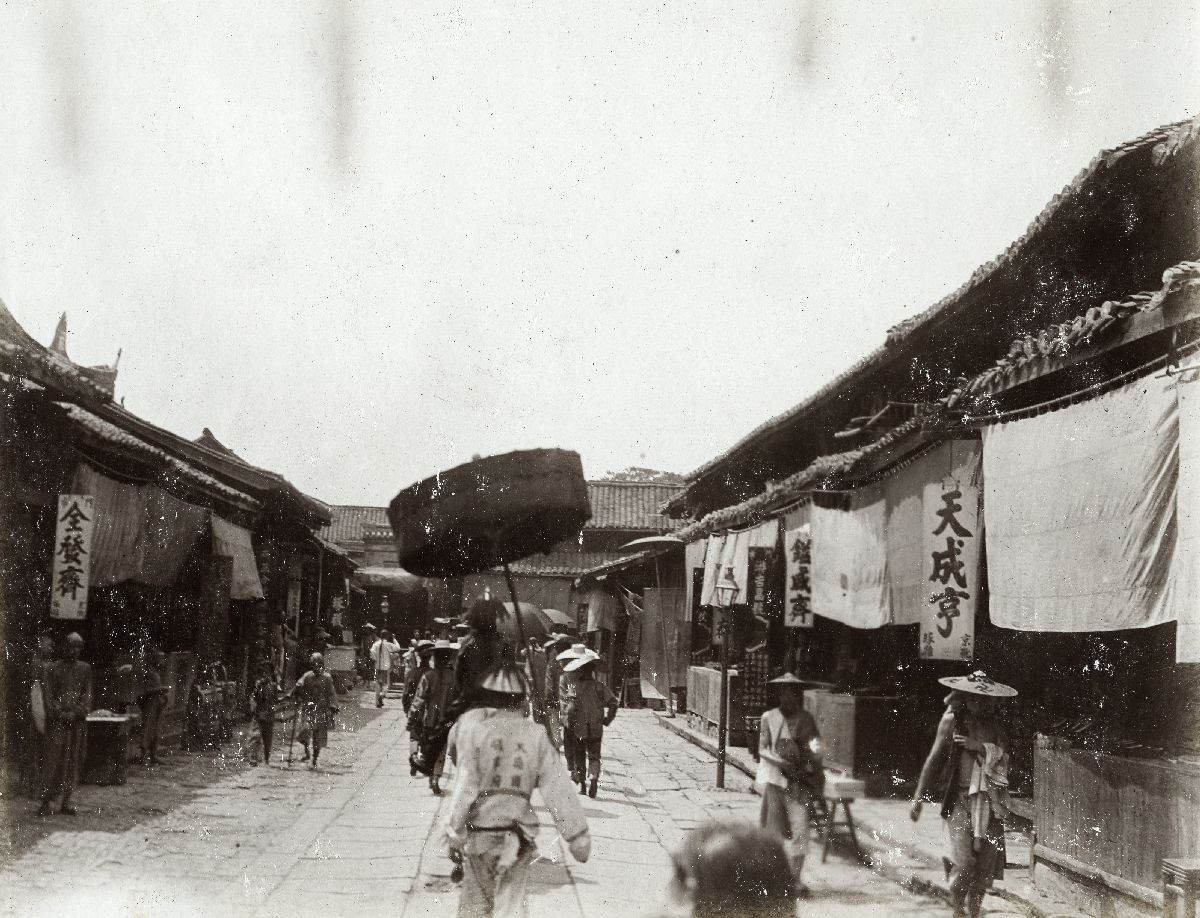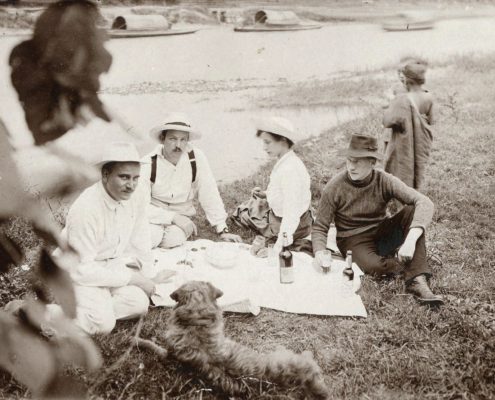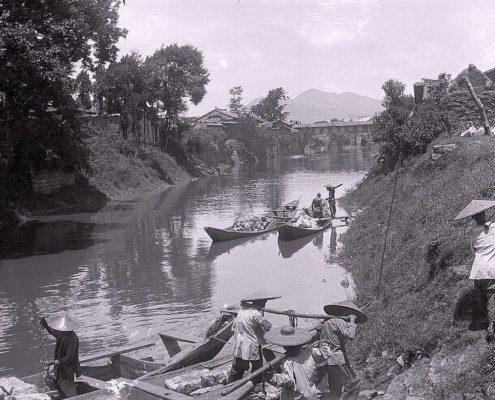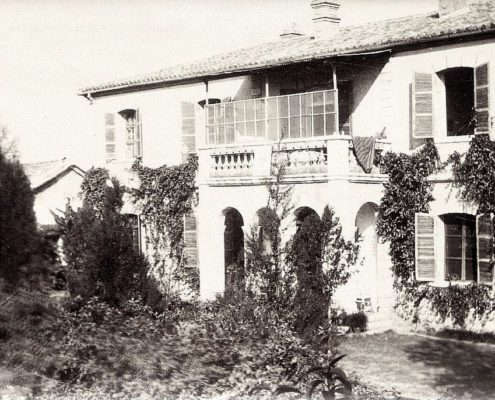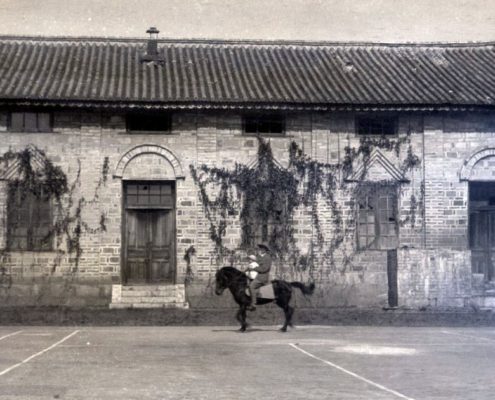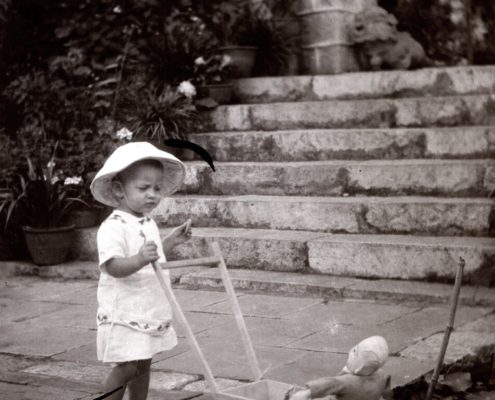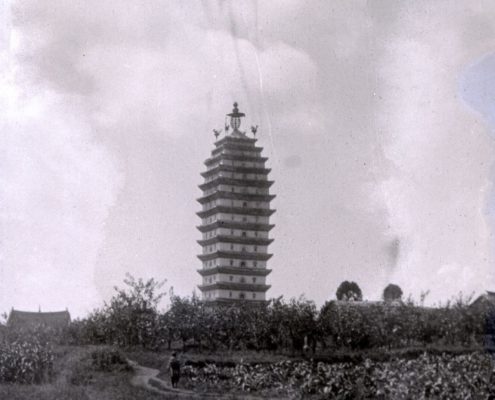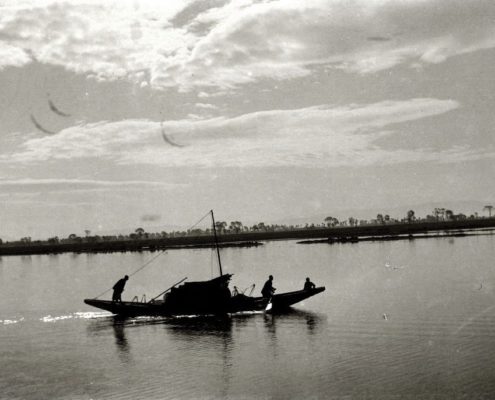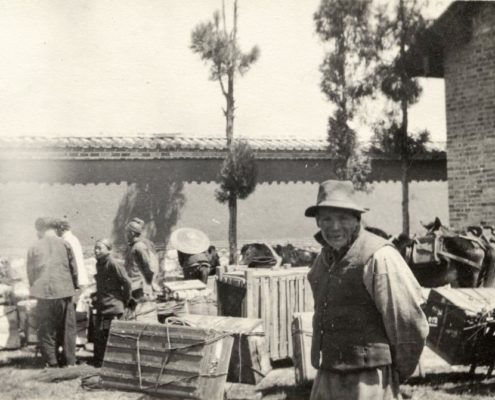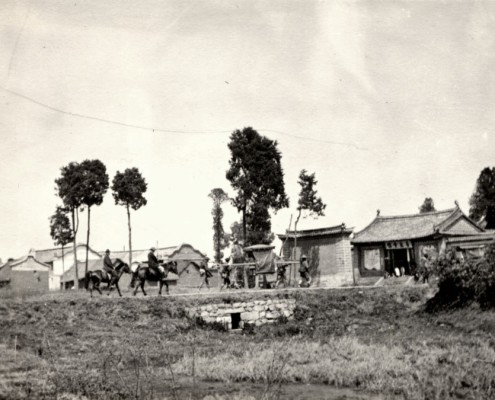Source: Bacons Large Excelsior Atlas of the World, map: Asia and Europe (selection), London: Bacon, ca. 1920. Shelfmark of the Staatsbibliothek zu Berlin: IIIC 2° Kart. B 1858.
1 Shanghai
“It was a tepid, still evening. We travelled along the brightly lit Bund, one behind the other, in nimble rickshaws. Everything appeared before me as if in a dream. The tooting of the cars, the ringing of electrical trams sounded to my ears just as if I was at home in Berlin. But alongside that an unusual view for me, that of wagons which were pulled by half-naked, breathless people; brown-skinned, Indian policemen with bright red turbans and shining black sideburns on the streets of the English concession; equipage harnessed by ponies and a coachman with a long flying queue, dressed in white and seated at the front seat.”
(Hedwig Weiss-Sonnenburg. „Tagebuchblätter aus Chinas Revolutionszeit“. Gerechtigkeit: Monatshefte für Auswärtige Politik (1919), 697-706, transl.)
2 Chongqing
“Never shall I forget my first impression, as I was carried into the city in a litter. My carrier, whose hoarse voice shouted “Dsao kai” – Make room! – cried out and then in a singing tone of voice “Bangko”, when they exchanged the wooden rails which supported the litter. Before them scurried the two “security guards” of the consulate. They scattered here and there, small awkward fellows, with their chests thrust out and their heads cocked up. They wore something like a blue uniform, which was embroidered with “da doguo lingse” (Great German Consulate) on the front. But with the indescribable bustle in the streets it was not at all easy to clear the way. Vendors and labourers were thrown to the sides, stubborn mules dispelled, women and children were warned.
(Hedwig Weiss-Sonnenburg, Memoirs part II China, transl.)
3 Chengdu
“How happy was I, when the mighty walls of Chengtu-fu emerged before us on the second evening. Soon we would arrive at our destination. The path went over a beautiful bridge, the Marco-Polo bridge (for he had mentioned this already in his travel report), and then through the high eastern gate. A couple of streets further, we were greeted by the banging of a fireworks, which a laughing Chinese who was running beside us had set off. Doors and gates were yanked open, we passed through a courtyard filled with blooming flowers and we had arrived.”
(Hedwig Weiss-Sonnenburg, Memoirs part II China, transl.)
4 Yünnan-fu (Kunming)
“In the afternoon of the third day we arrived at the plateau of Yunnan, situated at 1800m, and we entered the last station of the French railway: Yunnanfu. “Hey!” wailed the fresh mountain wind around our ears, as we stepped out of the train. Dazzling, almost unbearable did the sunlight appear to me at first glance. Nevertheless, I breathed in deeply and up here I felt as if I was reborn. In the small train station of this foreign place, we were greeted by a little piece of home. Lump, Thora and Strick [the three dogs of the Weisses] greeted us cheerfully.”
(Hedwig Weiss-Sonnenburg, Memoirs part II China, transl.)
